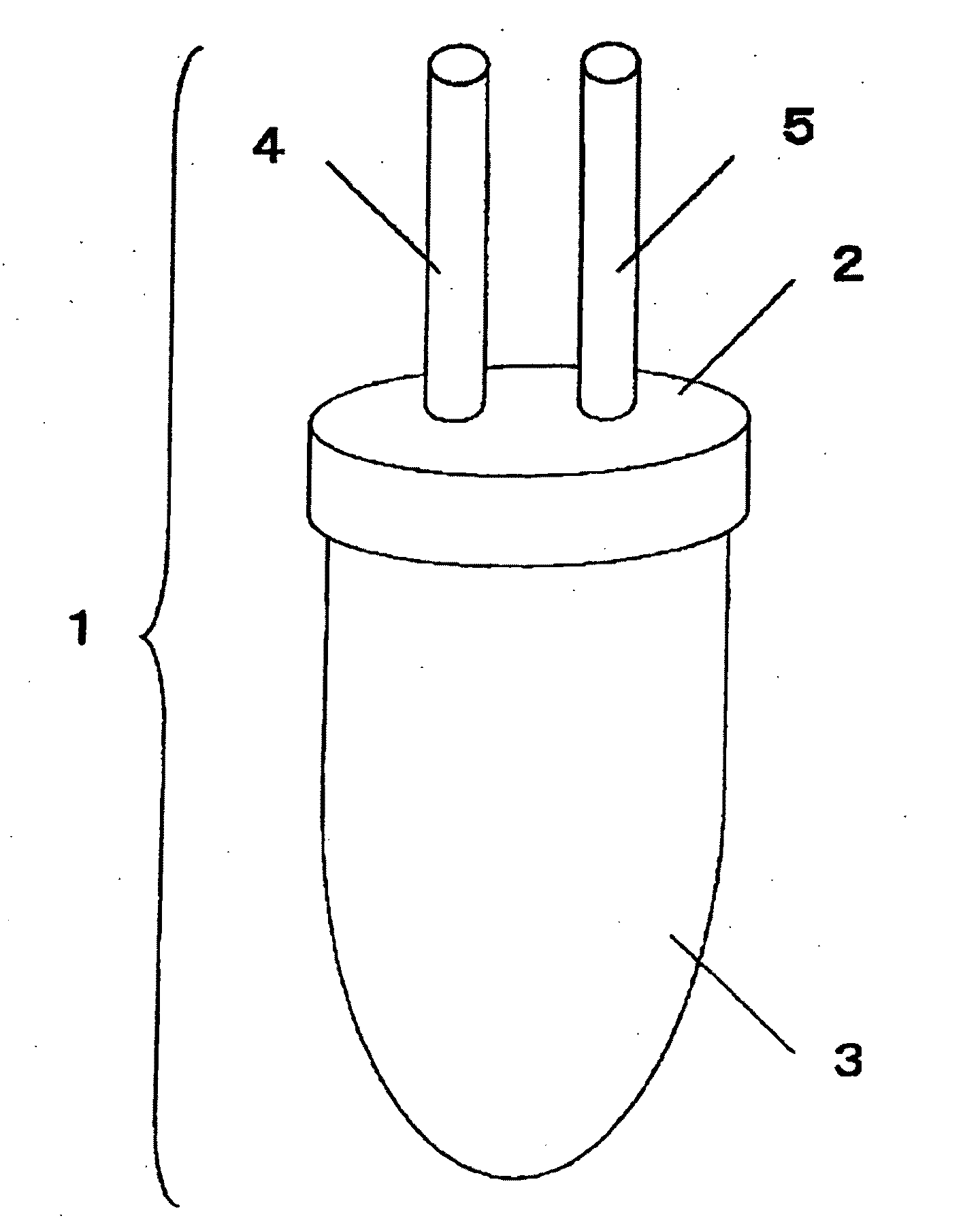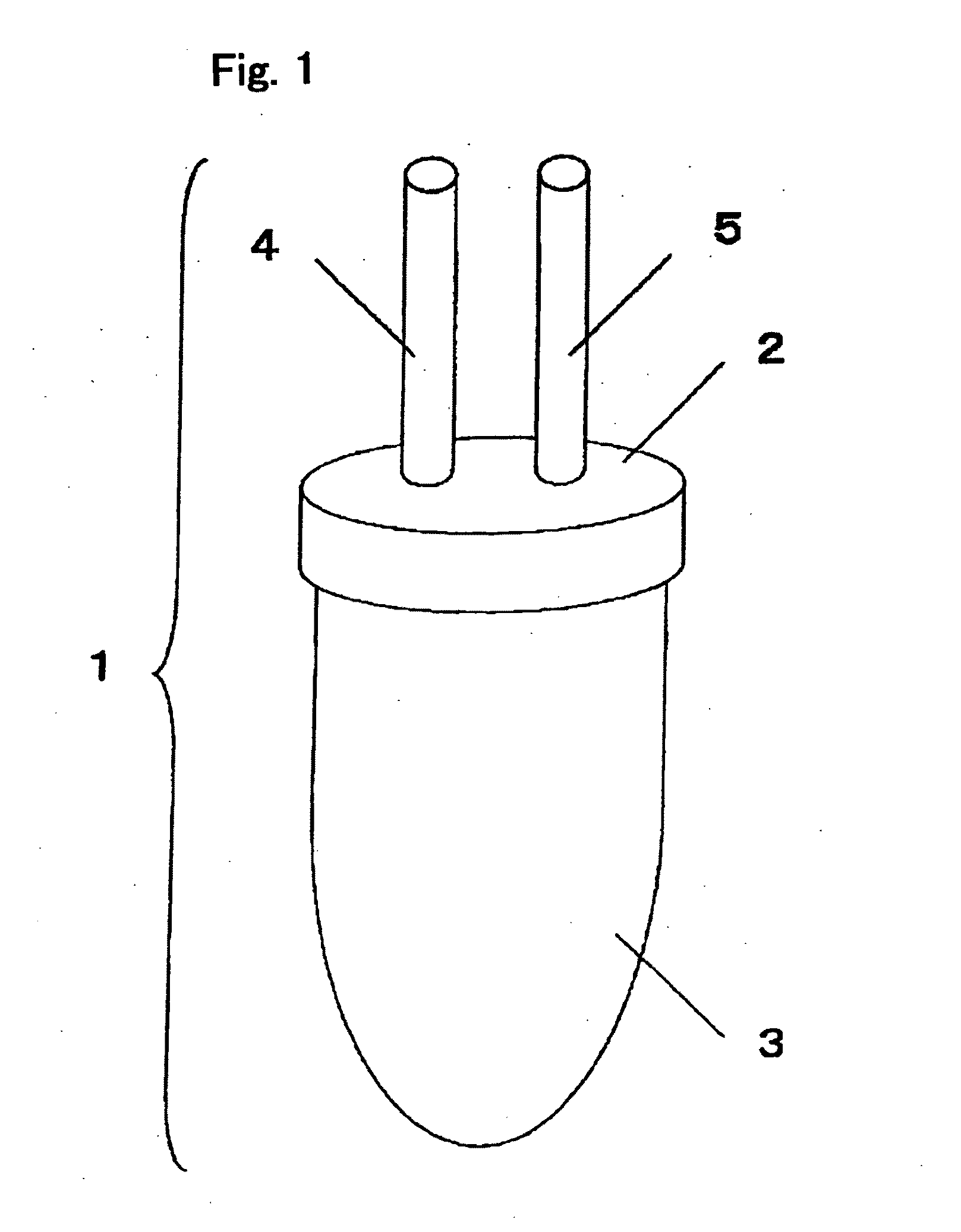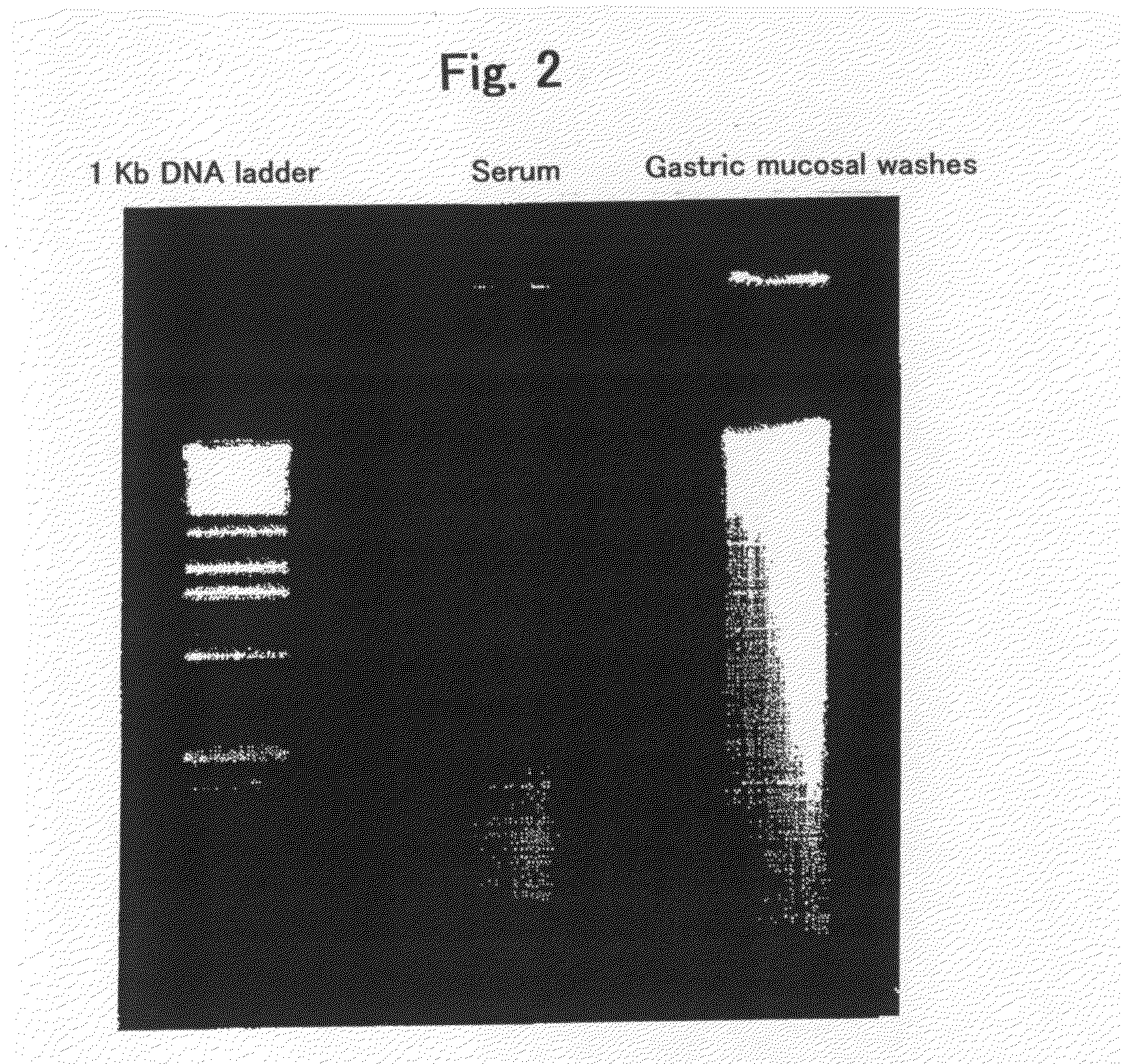Method for Detecting Disease-Related Marker Using Gastric Mucosal Lavage Fluid
a gastric mucosal and marker technology, applied in the field of disease-related marker detection, can solve the problems of insufficient total resection ratio, physical limitation of extending the spot into the “area”, and difficult macroscopic evaluation in most cases, and achieves the effects of prolonging the time of examination, improving quality, and facilitating sample collection
- Summary
- Abstract
- Description
- Claims
- Application Information
AI Technical Summary
Benefits of technology
Problems solved by technology
Method used
Image
Examples
example 1
Sample Collection Container
[0079]FIG. 1 shows an example of the sample collection container of the present invention. The sample collection container (1) consists of the cap-shaped upper part of the sample collection container (2) and the lower part of the sample collection container (3) with a volume of 50 ml, and the two parts are air-tightly joined by screwing. The upper part of the sample collection container (2) is equipped with two connecting portions, i.e., the Endoscope-side connecting portion (4) and the aspirator-side connecting portion (5), enabling airtight connection with a suction line of an endoscopic apparatus. In addition, 0.5 ml of 0.5-M EDTA (special grade, Wako Pure Chemical Industries, Ltd.) is sealed into the sample collection container (1).
example 2
Preparation of Samples
[0080]From the suction bottle of the endoscopic apparatus (EVIS LUCERA, Olympus Corporation), a suction tube that connects the connector was dismantled and connected to the Endoscope-side connecting portion of said sample collection container, and at the same time, the aspirator-side connecting portion of said sample collection container was connected to the connecting portion of the scope side of the suction bottle, thus forming a closed circuit.
[0081]To human subjects with various gastric disorders, the pretreatment agent prepared by dissolving 20,000 units of Pronase® (Pronase® MS, Kaken Pharmaceutical Co., Ltd.) and 1 g of sodium hydrogen carbonate into a solution of diluting 4 ml of dimethicone (Gascon® drop, Kissei Pharmaceutical Co., Ltd., this contains 80 mg of dimethylpolysiloxane) in 50-100 ml of tap water was administered, then 10-15 min later, the subjects were rotated around their body axis for 2 to 3 times while they were lying, and subjected to n...
example 3
Evaluation of Quality and Quantity of DNA
i) Evaluation of Quality of DNA
[0084]The quality of DNA contained in the above samples derived from human subjects with gastric cancer was evaluated by electrophoresis. Electrophoresis was performed in 1% agarose gel at 100 V for 30 min, by diluting 1-2 μg of a DNA sample to 10 μl of H2O. FIG. 2 shows the evaluation results by electrophoresis. The left lane indicates a positive control (1 Kb DNA extension ladder, Cat. No. 10511-012, Invitrogen), and the middle lane indicates a serum sample, and the right lane indicates a gastric mucosal washes. Any of the results demonstrates that the gastric mucosal washes comprises DNA with a quality better than that in the serum samples and comparable to that in the biopsy samples.
ii) Evaluation of Quantity of DNA
[0085]The amounts of DNA collected from the samples derived from human subjects with gastric cancer were evaluated by spectrometry. The following samples were used: from subjects with gastric canc...
PUM
| Property | Measurement | Unit |
|---|---|---|
| Mass | aaaaa | aaaaa |
| Temperature | aaaaa | aaaaa |
| Temperature | aaaaa | aaaaa |
Abstract
Description
Claims
Application Information
 Login to view more
Login to view more - R&D Engineer
- R&D Manager
- IP Professional
- Industry Leading Data Capabilities
- Powerful AI technology
- Patent DNA Extraction
Browse by: Latest US Patents, China's latest patents, Technical Efficacy Thesaurus, Application Domain, Technology Topic.
© 2024 PatSnap. All rights reserved.Legal|Privacy policy|Modern Slavery Act Transparency Statement|Sitemap



